Top 6 Content Experience Platforms

For many years, marketers had a dependable solution to serve online content to their audience: web-based Content Management Systems (CMS). Now, marketers are finding that CMS is a product of its time. CMS was built around the assumption that most people were browsing their internet on desktop PCs and laptops, doggedly plugging in search keywords and reading static web content.
Unfortunately for CMS users, legacy web pages built with legacy systems are not driving conversions in 2022. The user experience needs personalization to engage today’s audiences, who respond to dynamic content optimized for phones, smartwatches, and other devices they favor. CMS isn’t up to this task, but fortunately, there’s a worthy successor—the Content Experience Platform (CXP).
Creating personalized experiences is not as simple as building one static web page for all of your audience segments, but it’s worth the effort. Brands that offer relevant, customized content are preferred by 80% of consumers. Marketers who can quantify their improvements toward personalization report an average 19% uplift in sales.
This post will take a deeper look at Content Experience Platforms, what makes them different from CMS, their features and benefits, and survey the top six content experience platforms available today.
What is content experience?
“Content Experience” refers to the user’s entire process of finding, consuming, and engaging with content. Content marketing has to do with creating and distributing content. The content experience is everything the user does with it, from the initial discovery to their choice to comment on the content or share it after viewing.
Three primary factors make up the content experience. First is the environment—the layout and design elements that define the aesthetics of your content presentation. Next is structure, which is the sequence in which different pieces of content are delivered to the audience. Last is engagement, which encompasses everything you’re doing to keep your audience motivated to move from one piece of content to the next.
Take, for example, a basic company blog. It only takes a WordPress template and a few posts to get one up and running, but the experience of reading it might be pretty thin.
The question is, how can you make it a better content experience? Try adding the following:
- Fonts and graphics that fit your branding and appeal to your audience
- Post sequencing that flows naturally and includes relevant, helpful inline links
- Comment boxes, share buttons, interactive widgets, and other invitations to engage
- A personalized email inviting leads to check out specific posts that would be of interest to them
With all these elements in play, the audience is led through a deliberately-crafted experience from the start.
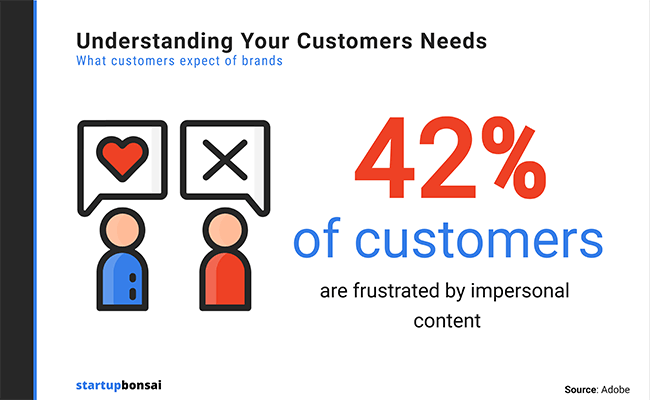
What is a Content Experience Platform?
Ultimately, content marketing is everywhere, and it’s easy for buyers to feel overwhelmed by the amount of information sellers are trying to get them to consume. The best way to get them to keep going past the headline or thumbnail is to make sure you’re showing them content that speaks to where they’re at in their customer journey. Content Experience Platforms are designed to do just that.
Content Experience Platforms generate, manage, and deliver content through APIs and other forms of software integration, using search data and predictive analytics to match audiences with the right content. These platforms usually emphasize interactivity and personalization to spur engagement.
Content Experience Platforms differ from Content Marketing Systems in that CXPs focus on creating the core elements of your content—text, graphics, videos—while CMS is more about how that content can be curated, customized, and presented in the most compelling way possible. These systems need to work together to maximize the efficacy of all your content creation efforts.
What are the key features of Content Experience Platforms?
There can be a fair amount of overlap between different content solutions, but the following features tend to define Content Experience Platforms:
- A central hub for storing content
- Tools for organizing and segmenting content for different audiences
- Customizable templates
- Personalized content recommendations, CTAs, and lead capture forms
- Analytics to provide insight into audience behavior
- Performance metrics
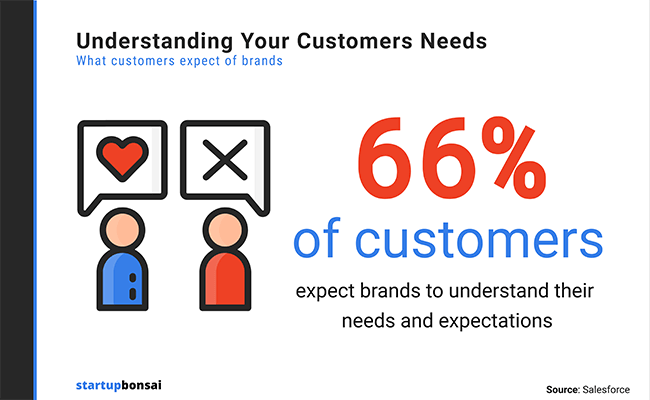
What are the benefits of Content Experience Platforms?
Content Experience Platforms boost the ROI of your content creation endeavors by ensuring that your audiences see the most relevant and compelling content delivered through their preferred channels. The personalized content is delivered with context and presentation that gives it the most significant impact.
Instead of creating a one-size-fits-all content experience common to everyone who visits your site, these platforms allow you to provide each segment—or individual—with the content that has the best chance of persuading them to convert.
Top 6 Content Experience Platforms
1. Uberflip
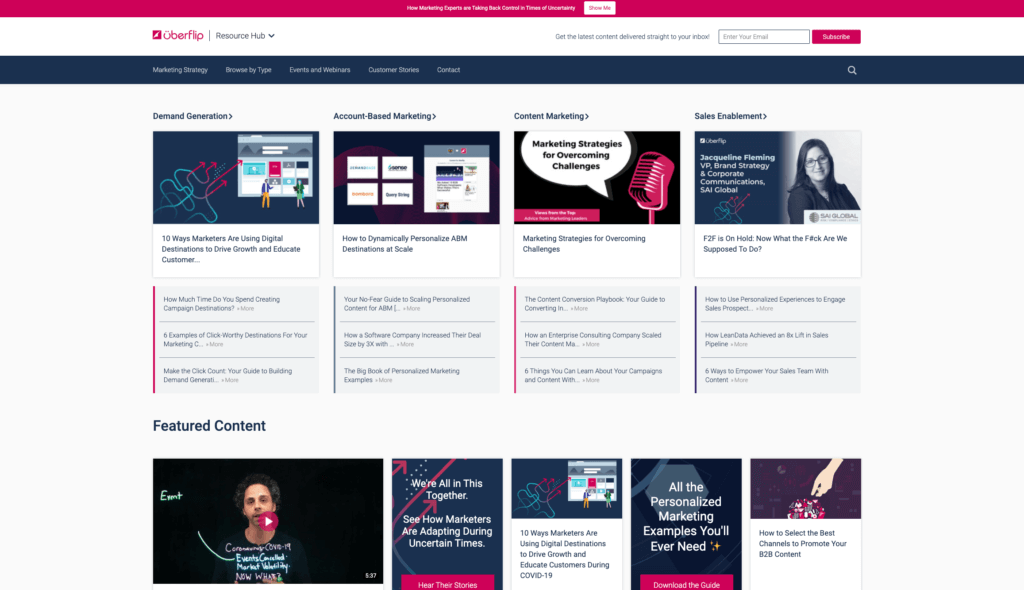
Uberflip is designed to help businesses grow by converting leads through content personalization. It lets users organize and tag their assets in content hubs that can then be quickly developed into content experience “streams” customized for particular audience segments.
Pros: Uberflip offers excellent support, customer service, and documentation.
Cons: Setting up content hubs can feel complicated until you get used to it.
Pricing: By request
Reviewer Says: “Implementations and the functionality of the tool itself is incredible. Two areas that we struggled a bit with were the onbrand team and ongoing account management.”
2. Ion, by Rock Content
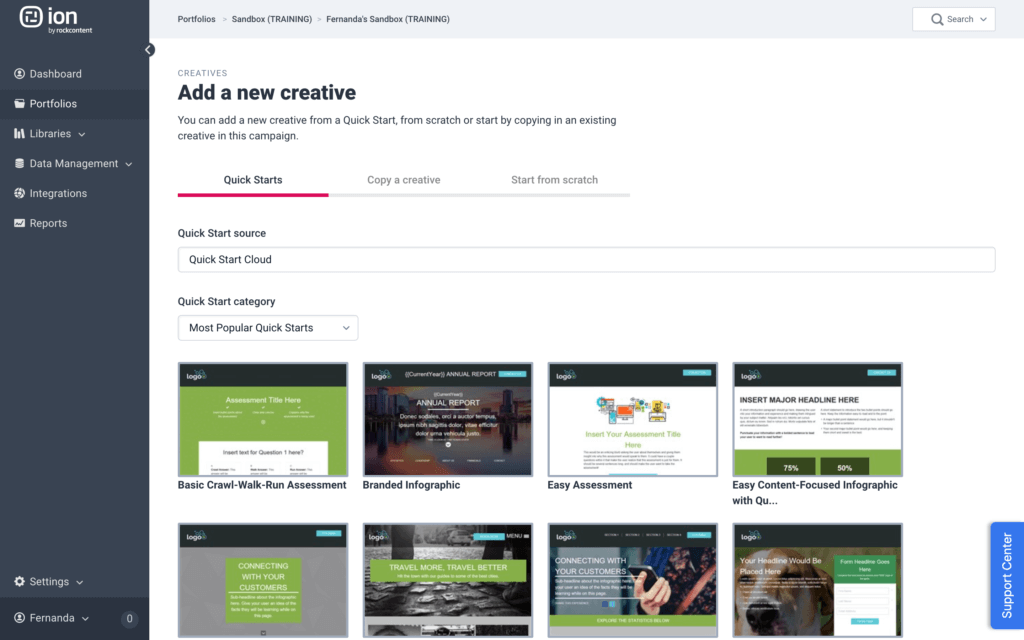
Ion is all about giving your audiences fun things to engage with: calculators, quizzes, interactive graphics, and other widgets. While they’re playing around, Ion is capturing data that can help you pinpoint how far they’ve progressed in their customer journey.
Pros: It’s easy to get up and running with the quick-start templates, but Ion offers lots of customization options for coders, too.
Cons: Getting the most out of Ion may require some training—it’s not the most user-friendly platform.
Pricing: By request
Reviewer Says: “It’s a strong solution for landing pages or small micro-sites because it has a lot of built-in functionality that is powerful.”
3. ON24
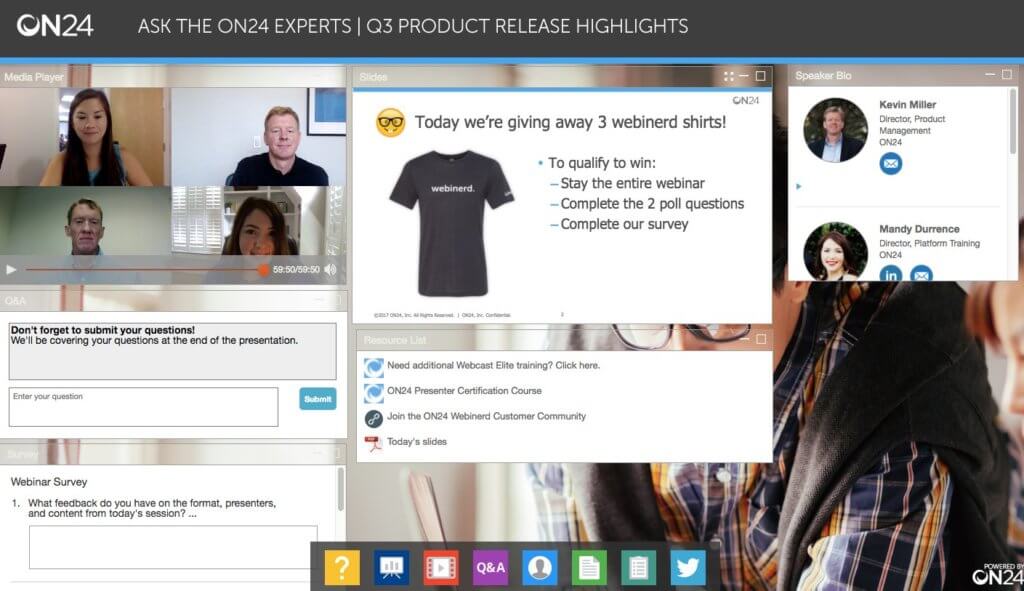
With a focus on creating webinars and other virtual engagements, ON24 is a CXP designed to help live events connect with audiences in a relevant, personal, and compelling way.
Pros: ON24 should integrate well with the rest of your marketing stack, and the support staff is quick to respond to questions and requests.
Cons: There are some issues with quality and incompatibility when importing certain media types.
Pricing: By request
Reviewer Says: “It is straightforward to use, easy to understand, and very dynamic. You can play with the widgets to make your webcast more attractive.”
4. Contentstack
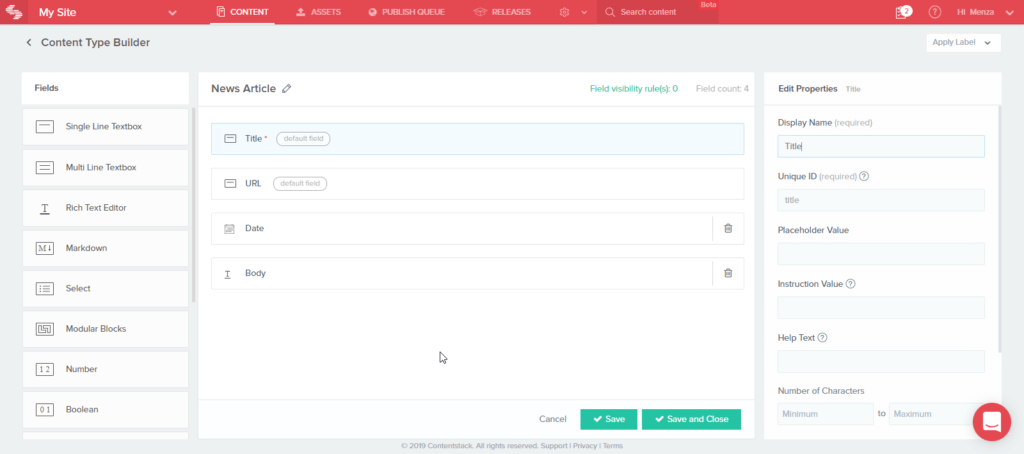
Though branded as a Headless Content Management System, Contentstack includes numerous CXP features such as a centralized hub for storing assets, workflows for creating and publishing new content, and plenty of ways to integrate with your other marketing tools.
Pros: They offer lots of support and customization options.
Cons: The user interface can be challenging to work with at times.
Pricing: $995 per month for the Start plan, $3000 per month for the Grow plan, and custom pricing for enterprises.
Reviewer Says: “Some complexities come with a headless CMS that seem to make you more reliant on the developers for changes, but that’s offset by many of the other flexibilities.”
5. Showpad Content
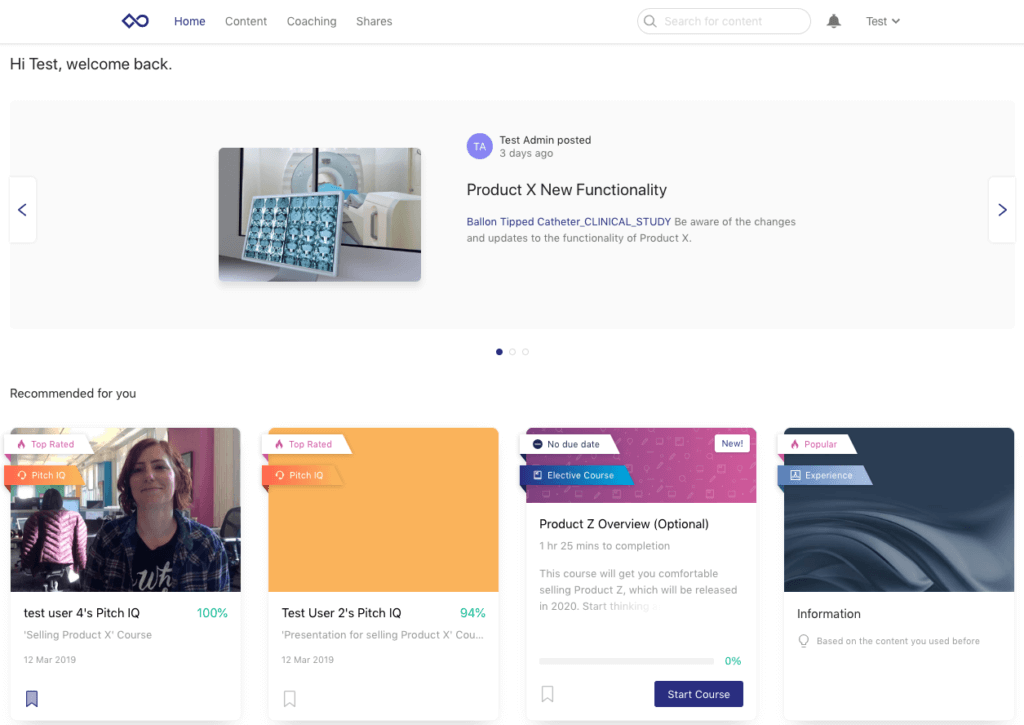
As a platform for centralizing and organizing your content assets, Showpad helps sales and marketing teams work together to match audiences with the content that’s most likely to nudge them toward conversion. Showpad uses AI to generate relevant content recommendations and includes analytic features to help you measure your performance.
Pros: Showpad’s analytics are great at letting you know how users are engaging with your content.
Cons: Finding specific pieces of content stored in Showpad can be challenging.
Pricing: By request
Reviewer Says: “Showpad Content works well to provide a central hub for all document hosting. The interface is simple and easy enough to use.”
6. Relayto
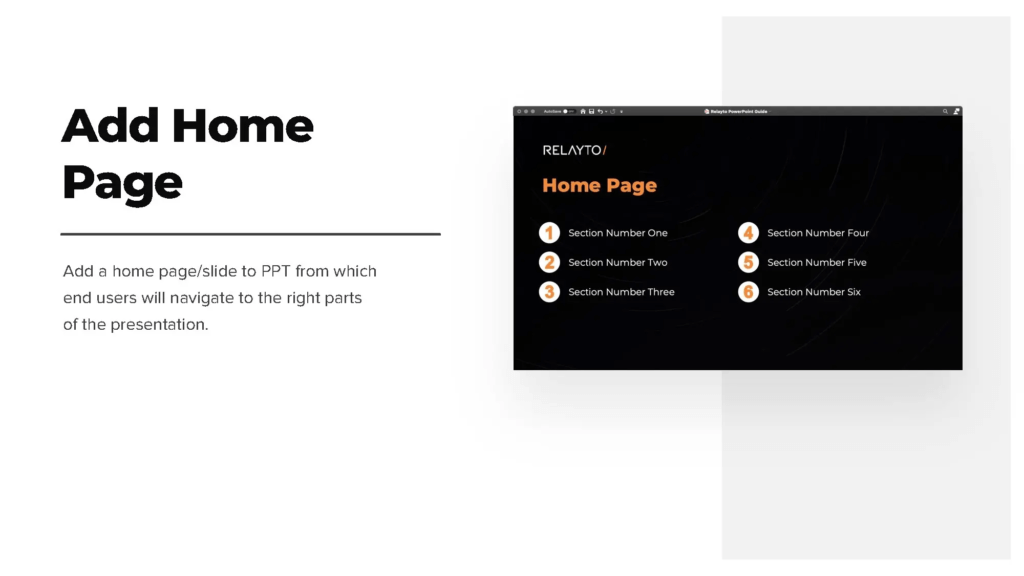
Relayto helps businesses build engaging content experiences quickly by leveraging their existing documents, slideshows, and other materials. It uses analytics to determine exactly what users are looking for. Then, Relayto creates interactive experiences that allow users to choose their own path to the next stage of their customer journey.
Pros: The interface gets high marks for its user-friendliness, and the analytics dashboard is very informative.
Cons: You may experience some software glitches and slow processing times.
Pricing: Ranges from $80 to $200 per user per month, depending on the plan. There’s also a free beta version.
Reviewer Says: “There will be a glitch here and there, but a quick page refresh will solve the problem.”
Set Your Content Up for Success with a CXP
Every marketer knows they need great content, but it’s not enough to have a stockpile of brilliant blog posts, videos, and whitepapers. If you don’t have a way to put it in front of a lead at just the right moment to answer the questions they have at that point in their buyer journey, it might not be doing anything to help drive sales.
Content Experience Platforms can cover all the bases that will make your content appealing, engaging, and readily accessible, but timing is everything. Tools like Trendemon specialize in mapping out the buyer journey and help you zero in on a lead with the exact information they need to justify their next step into your sales funnel. By using the two in concert, you’ll increase your content marketing ROI and fill your sales pipeline at the same time.